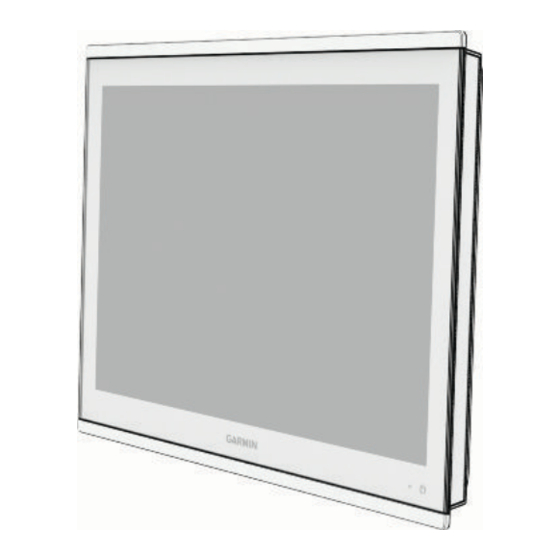
Garmin GPSMAP 9000 Series Manuals
Manuals and User Guides for Garmin GPSMAP 9000 Series. We have 3 Garmin GPSMAP 9000 Series manuals available for free PDF download: Owner's Manual, Installation Instructions Manual
Garmin GPSMAP 9000 Series Owner's Manual (256 pages)
Brand: Garmin
|
Category: Marine Equipment
|
Size: 18 MB
Table of Contents
-
Introduction15
-
Memory Cards26
-
Home Screen29
-
Menu Bar30
-
Presets35
-
Chart Menu61
-
Chart Layers61
-
Destinations70
-
Waypoints71
-
Routes73
-
Tracks79
-
Boundaries81
-
Sail Racing83
-
Polar Tables85
-
Wind Hold88
-
Livevü Layer100
-
True Motion101
-
Perspective View104
-
Sonar Sharing106
-
Sonar Setup108
-
Sonar Alarms111
-
Radar122
-
Radar Overlay122
-
Marpa126
-
VRM and EBL127
-
Echo Trails129
-
Radar Settings129
-
Radar Gain129
-
Radar Setup Menu132
-
Autopilot134
-
Autopilot Screen135
-
Yamaha Autopilot141
-
Turning on DSC147
-
DSC List147
-
Viewing Graphs159
-
Inreach Messages160
Advertisement
Garmin GPSMAP 9000 Series Owner's Manual (232 pages)
Table of Contents
-
Introduction15
-
Memory Cards24
-
Home Screen27
-
Menu Bar28
-
Presets33
-
Chart Menu58
-
Chart Layers58
-
Destinations68
-
Waypoints69
-
Routes71
-
Tracks77
-
Boundaries79
-
Sail Racing81
-
Polar Tables83
-
Wind Hold86
-
Sonar Sharing100
-
Sonar Setup102
-
Sonar Alarms105
-
Radar115
-
Radar Overlay115
-
Marpa118
-
VRM and EBL120
-
Echo Trails121
-
Radar Settings121
-
Radar Gain121
-
Radar Setup Menu124
-
Autopilot126
-
Autopilot Screen127
-
Yamaha Autopilot132
-
Turning on DSC137
-
DSC List137
Advertisement


